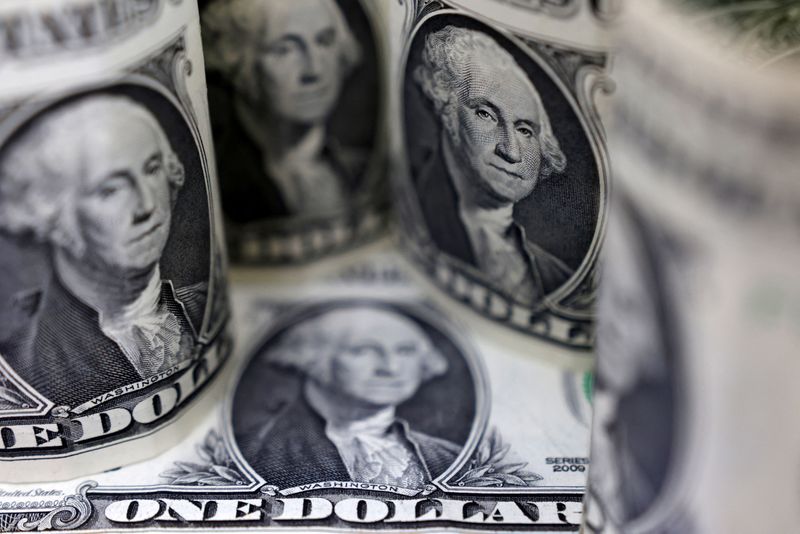Investing.com – Nomura analysts forecast continued weakness in the U.S. dollar, especially in Asian markets, in a note Tuesday. This outlook is driven by various macroeconomic factors, positioning adjustments and portfolio shifts, which are expected to put downward pressure on the USD in the coming months.
Nomura expects a narrowing of the growth gap between the US and Europe, which has been a key factor in the USD’s strength.
US growth rates are expected to weaken, with the US-EU GDP growth gap expected to narrow from 1.6% in the second quarter of 2024 to 0.6% in the third quarter of 2024 and 1.0% in the fourth quarter of 2024.
“This is likely to support EUR/USD, while our conversations with market participants concluded that there are positioning risks towards higher if the spot breaks recent highs of 1.1139 in December 2023 (and 1.1276 in July 2023; last at 1, 1077),” the analysts said. said.
Significant shifts in speculative positioning are another factor contributing to expected USD weakness. Although positioning has been pared back, Nomura analysts believe there is a possibility of these positions being shorted on the USD.
This could be driven by increased portfolio allocation to emerging markets in Asia, as well as the waning of USD accumulation by corporates, retail investors and life insurance companies.
The significant USD hoarding in Asia, especially in China, Taiwan and Korea, could subside, putting further pressure on the USD.
Foreign portfolio investment in Asia is expected to increase, driven by a recovery from outflows that started in July 2024. Despite recent net outflows of foreign equities in Taiwan and Korea, there are signs of a recovery, which could lead to greater capital inflows into Asian markets.
Real money investors have maintained an underweight position in Asian bonds, and there is potential for reallocation, especially in markets like Indonesia.
Furthermore, Asian financial markets are still recovering from significant outflows during the COVID-19 pandemic, which a weaker US dollar could further support as these markets stabilize.
Historically, the USD has tended to weaken in the period leading up to and following the first rate cut by the Federal Reserve. With the Fed expected to begin its rate cutting cycle in September 2024, Nomura expects further USD weakness, especially against Asian currencies.
The past five Fed rate cutting cycles have shown that the USD/Asia currency pairs have weakened by an average of about 2% in the month before and after the first Fed cut. Furthermore, it is unlikely that most Asian central banks will be active in buying USD during the early stages of an Asian currency recovery, as most Asian currencies are still undervalued by various valuation measures.
The economic situation in China remains a crucial factor. Nomura suggests that a significant policy package aimed at stabilizing the property market could be introduced by the end of the year, which would likely support further USD weakness.
A more stable Chinese economy could lead to greater confidence in Asian currencies, exacerbating the USD’s decline in the region.
The upcoming US presidential elections pose additional risks for the USD. Although current polls point to a potential victory for the Democrats, the uncertainties surrounding a potential Trump victory could lead to USD volatility.
If Trump were to focus on issues such as geopolitical tensions, pressure on the Federal Reserve and attempts to weaken the USD, there could be further downside for the currency, especially if these policies are prioritized early in his term.


